Some dogs look strong, sturdy, and capable of many long years, yet their lifespans run surprisingly short. Their physical presence may seem powerful, but the biology beneath can limit the time they remain by your side.
It is a difficult contrast to accept. You see a dog that appears full of years, but the reality is that their clock moves faster than expected. Their maturity arrives early. Their joints age early. Their bodies slow early. Yet despite this brief span, they form connections that are lasting and meaningful.
The contrast between their appearance and their lifespan teaches a quiet truth. Time is not always visible from the outside. Some of the most remarkable dogs stay only for a short while, but they leave an emotional imprint that stretches far beyond their years.
As you read ahead, you will uncover which dogs carry these shortened lifespans and why their time is limited.
Key Takeaways
There is something tender about dogs who fill a home with so much love, even though their time with us feels shorter than it should be.
Breeds like the Great Dane carry a quiet wisdom in their giant frames, yet these very bodies make their lives feel compressed.
The Bernese Mountain Dog brings a warmth that settles into a family fast, which is why their early health challenges leave such an unforgettable mark.
Learning what shapes the lives of these gentle giants gives the whole article a depth that stays with you long after you finish reading.
Dog Breeds You Should Know Have Short Lives
1. Great Dane

Great Danes are known for their calm nature, yet their size gives them a natural authority inside any home. Their steady temperament makes living with them surprisingly easy despite how massive they are. Even with their easygoing personality, their alert instincts have long made them dependable household guardians.
Why Their Strength Comes With a Heavy Cost
These dogs may look invincible, but their bodies carry demands that shorten their years. Their frame works hard every day, and this puts them at risk for several life-limiting conditions that owners must understand early on.
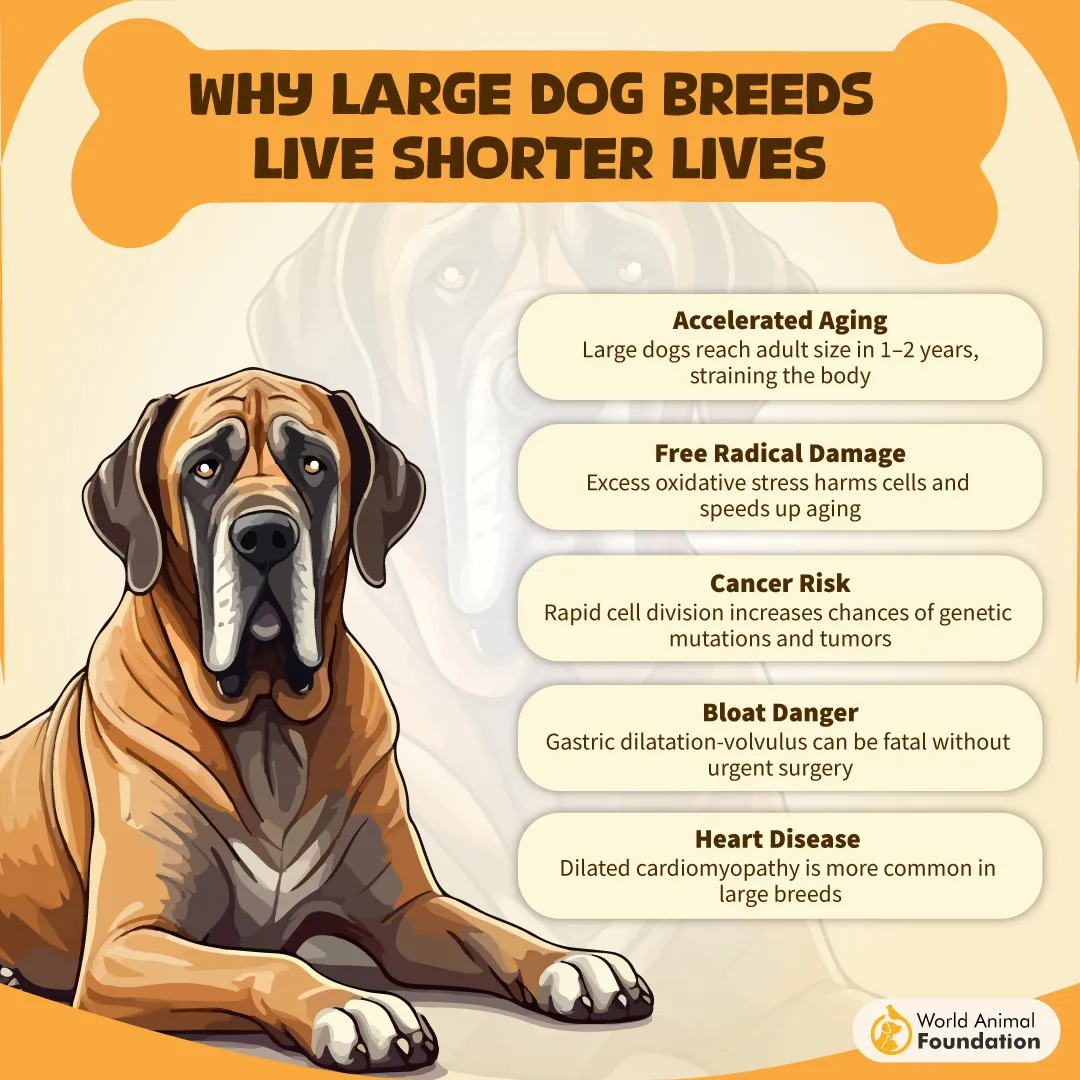
Here is a quick look to make this clearer:
Prone to gastric issues that require urgent care
High risk of heart-related conditions
Joint pressure that builds as they mature
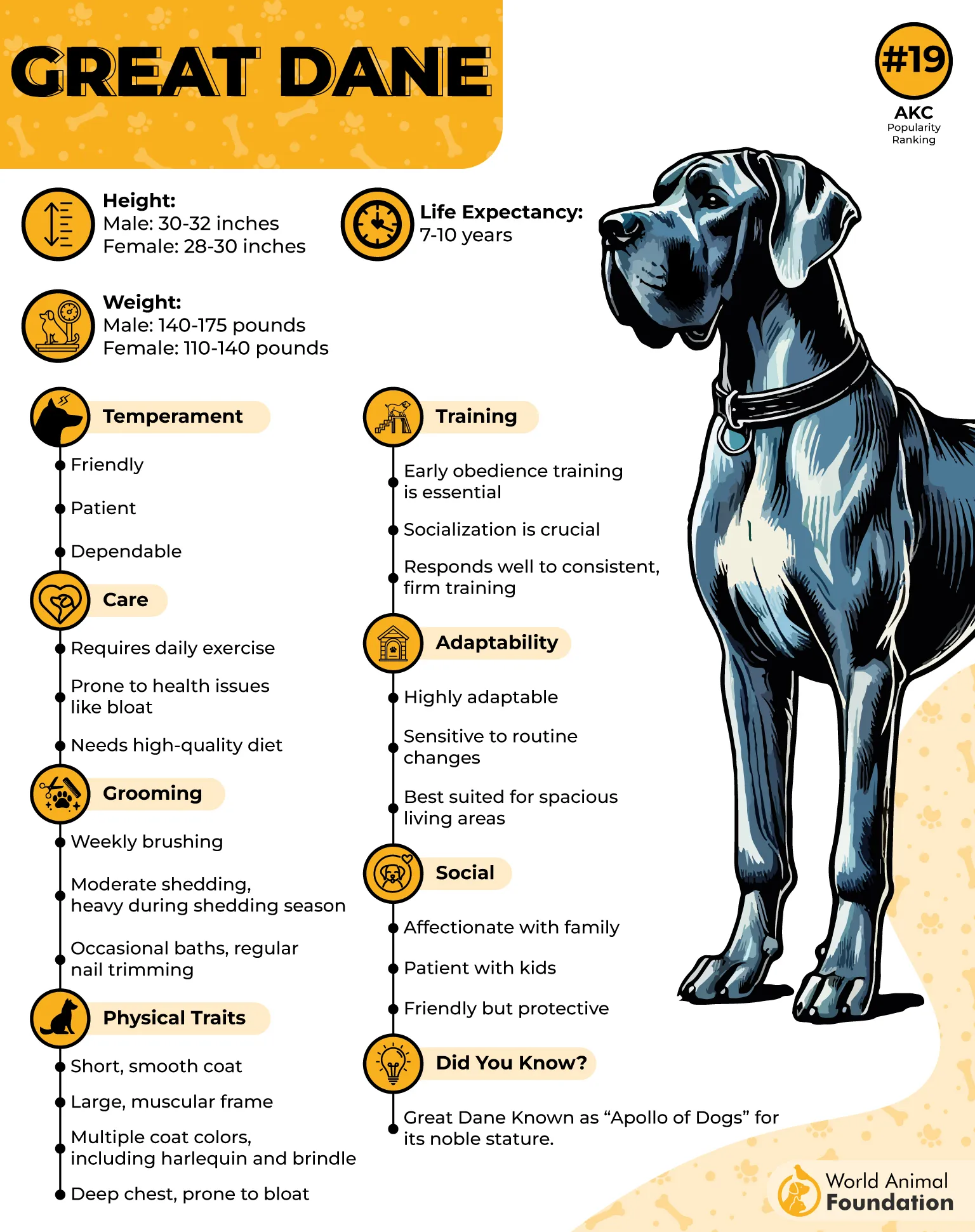
Health Realities of the Great Dane
As per PetMD, the biggest concern for this breed is bloat, which can become life-threatening within minutes if not recognized quickly.
Pet owners choose a preventive gastropexy surgery because it lowers the risk of severe twisting during an episode. Screening for thyroid issues, eye concerns, and hip problems is also common in responsible breeding programs.
2. Bullmastiff
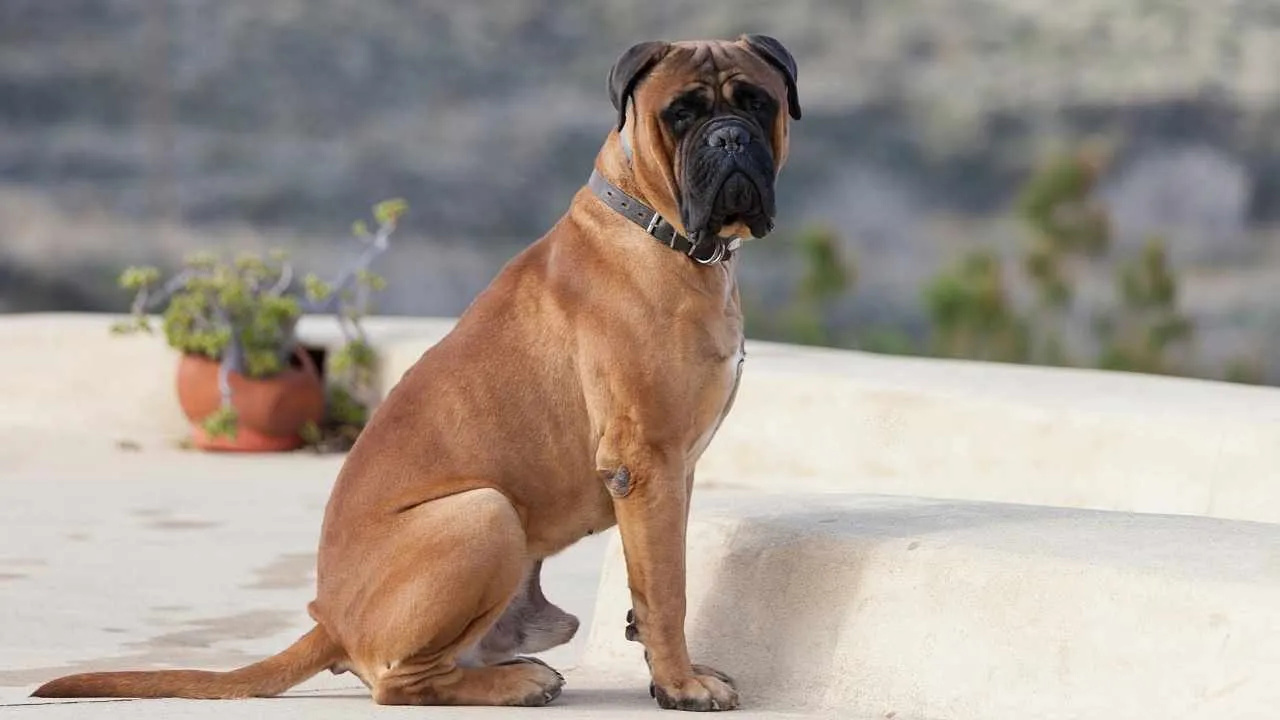
The Bullmastiff carries a composed strength that draws attention long before its size does. Its steady nature, paired with a confident stance, once made it the guardian of English estates searching for poachers at night.
This firm temperament is also the reason its lifespan is often discussed, as bigger working dogs tend to face health challenges earlier.
Built for Demanding Work
A Bullmastiff’s physique has heavy bones and broad muscles that once allowed it to pursue and hold intruders without hesitation. This robust build contributes to its shorter lifespan, as large-breed health problems appear more frequently over time.
These points help explain what owners usually consider:
Screening for cardiac, hip, and elbow concerns
Awareness of bloat risk in deep-chested breeds
Monitoring for conditions like cancer as the dog ages

Soundness Matters for Longevity
Breeders emphasize mental and physical soundness because a Bullmastiff cannot perform demanding tasks without it. Their efforts focus on maintaining structural balance rather than exaggerated features.
This focus on stability has a direct impact on overall health, especially for a breed already predisposed to several inherited conditions.
3. Irish Wolfhound
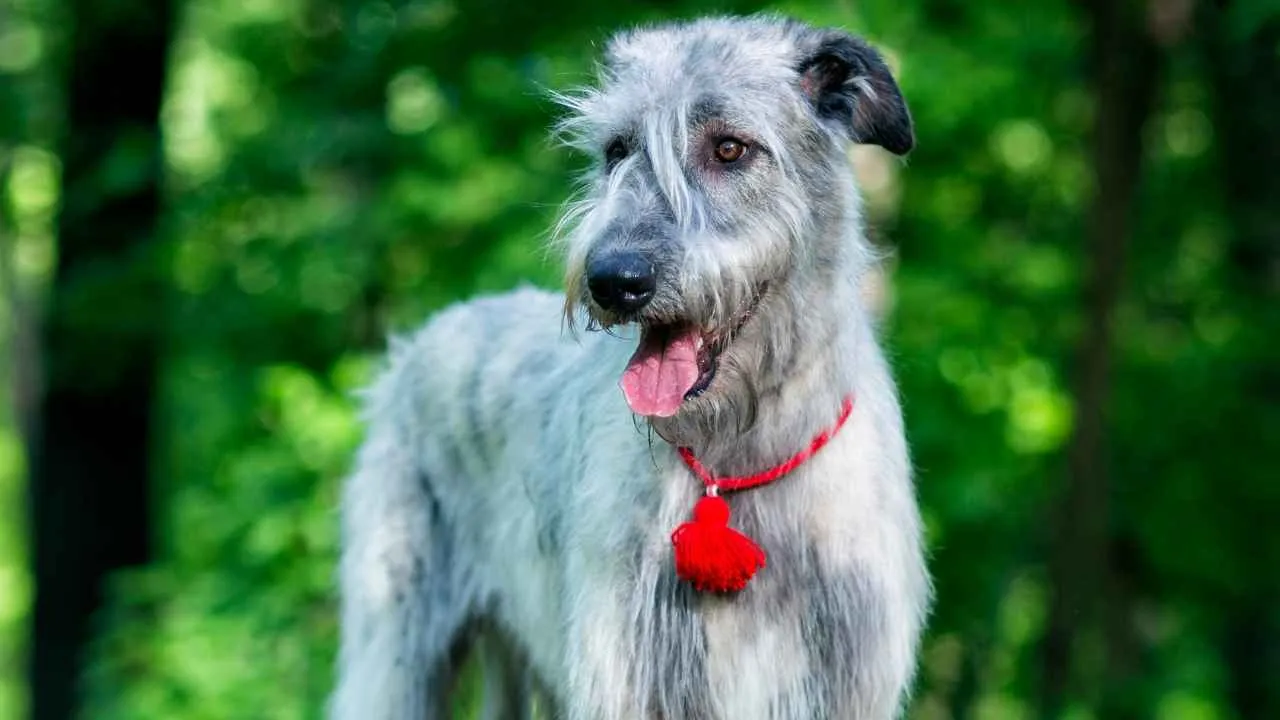
The Irish Wolfhound is quiet, has a steady nature, and carries itself with a calmness that surprises many first-time owners. Its size gives it a noble presence, yet its behavior remains soft and good-natured. These qualities once supported its role as a powerful hunter, a history that still shapes the way people view the breed today.
Built for Power and Speed
The long, athletic frame of the Irish Wolfhound allows it to move with remarkable ease for a dog of such height. As per the AKC, this physical ability once helped it confront wolves and large game, demanding a body capable of sudden bursts of speed.
A closer look at its working traits makes this even clearer:
Strong stride and quick acceleration
Confident posture during outdoor activity
Natural ability to scan wide areas

Health Challenges Linked to Size
Their immense build comes with vulnerabilities that are important for owners to understand. Wolfhounds are counted among the breeds with shorter lifespans because of health conditions tied to deep chests and rapid growth. Bloat is a major concern, and awareness of early symptoms can make a life-saving difference.
4. Neapolitan Mastiff
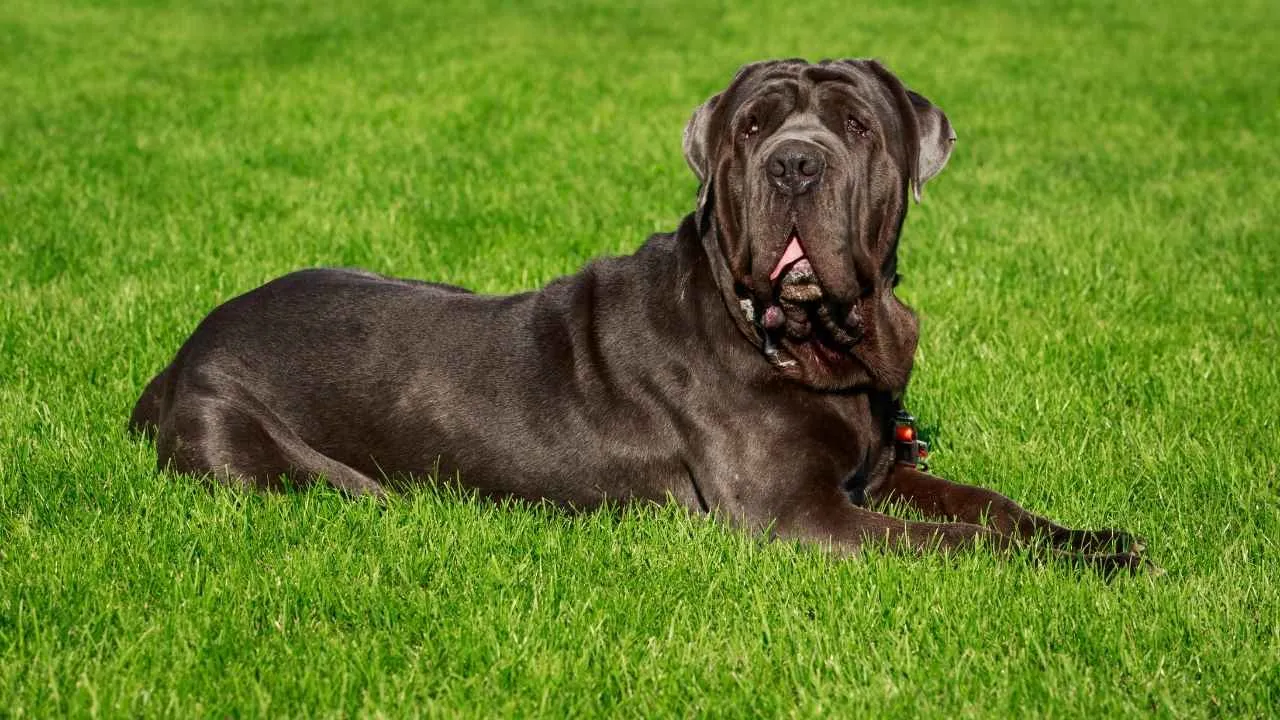
The Neapolitan Mastiff carries an enormous frame that puts constant pressure on its joints and internal systems. This size creates a presence that few breeds can match, but it also contributes to the shorter lifespans common among giant dogs. Their slow, lumbering movement often reflects the physical load they manage daily.
Health Realities That Need Attention
Their wrinkled face and loose skin attract instant attention, yet their real concerns lie deeper in the body. Large chests and heavy mass place them in the group of dogs at higher risk for bloat and mobility issues as they age.
These reasons often play a part in their brief lifespan:
Risk of gastric dilatation in deep-chested breeds
Eye inflammation, such as cherry eye, appears in some dogs
Joint stress that can lead to hip dysplasia

A Temperament That Masks Many Struggles
This breed is steady and warm with the people it knows, creating a calm environment at home. Their gentle nature often hides discomfort, so aches or changes in movement may go unnoticed.
Early conversations with a breeder or veterinarian help owners prepare for the common health patterns seen in giant breeds.
5. Leonberger

The Leonberger is renowned for having a serene, loving disposition that fits in well with family life. Its flowing double coat and composed posture add a touch of elegance to its presence.
Behind that softness is a dog that bonds deeply, which makes their shorter lifespan feel especially significant for owners.
Why Their Size Comes With Health Challenges
Their massive frame carries both beauty and vulnerability, and this becomes clear when looking at health risks tied to giant breeds.
As per the Leonberger Club of America, digestive emergencies such as bloat are well-documented in Leonbergers, and recognizing early warning signs is important for anyone considering them.
This is a good moment to highlight a few practical points:
Symptoms of bloat often include restlessness
Early veterinary attention reduces fatal outcomes
Preventive gastropexy is commonly recommended
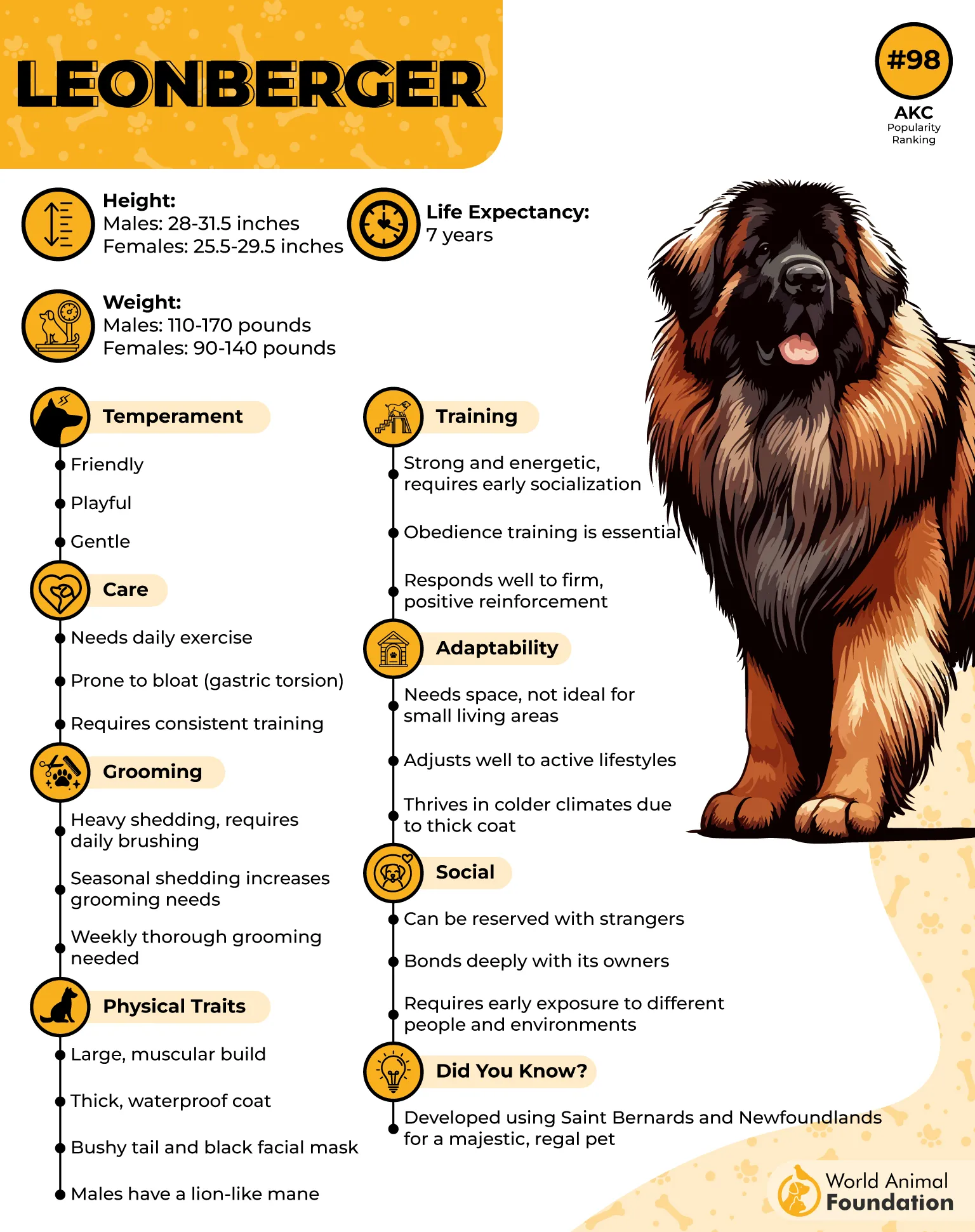
Calm Personality That Masks Their Fragility
Their patience and gentle energy can lead people to assume they are sturdier than they actually are. Leonbergers age faster than medium-sized breeds, and their joints and heart often show strain earlier in life. Families who admire their steadiness should also prepare for the health curve that comes sooner for them.
6. Bernese Mountain Dog
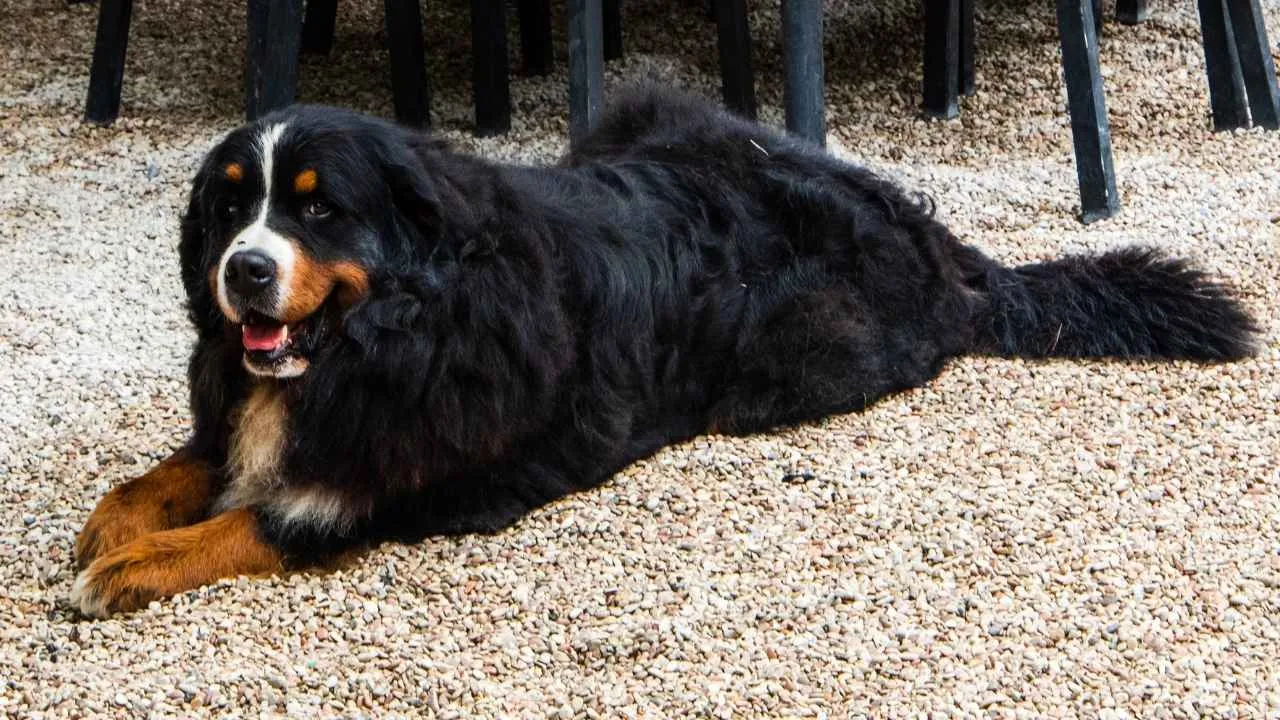
Bernese Mountain Dogs often win hearts with their calm, steady nature and their eagerness to stay close to their people. Their size and strength were once used for pulling carts, which shaped their reputation as dependable companions. These qualities still define them today, even though their time with families can be heartbreakingly short.
Traits That Shape Their Shorter Lifespan
Their affectionate personality and easygoing rhythm make them a favorite among large-breed enthusiasts. Yet certain health patterns appear more often in this breed, contributing to their well-known shorter life expectancy.
Here is a quick look at a few traits linked to that vulnerability:
Higher risk of certain cancers found repeatedly in breed research
Joint issues that responsible breeders actively screen for
Sensitivity to bloat, which requires immediate attention
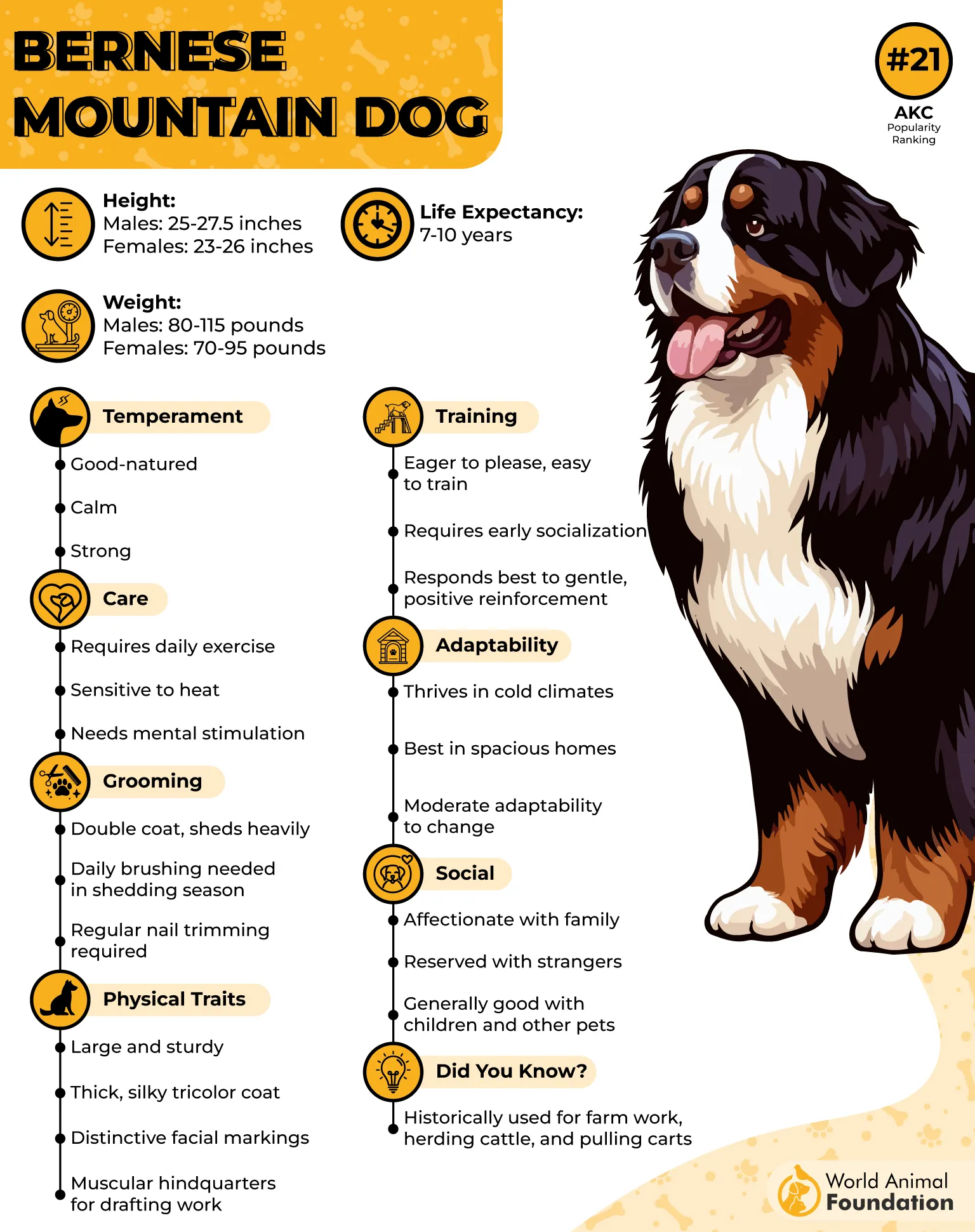
A Bond That Deepens Quickly
Berners tend to form strong emotional connections, often choosing one person as their source of comfort and guidance. This closeness is one reason families remember them so intensely once they’re gone. Their gentle approach to daily life makes the weight of their shorter lifespan even more noticeable.
7. Newfoundland
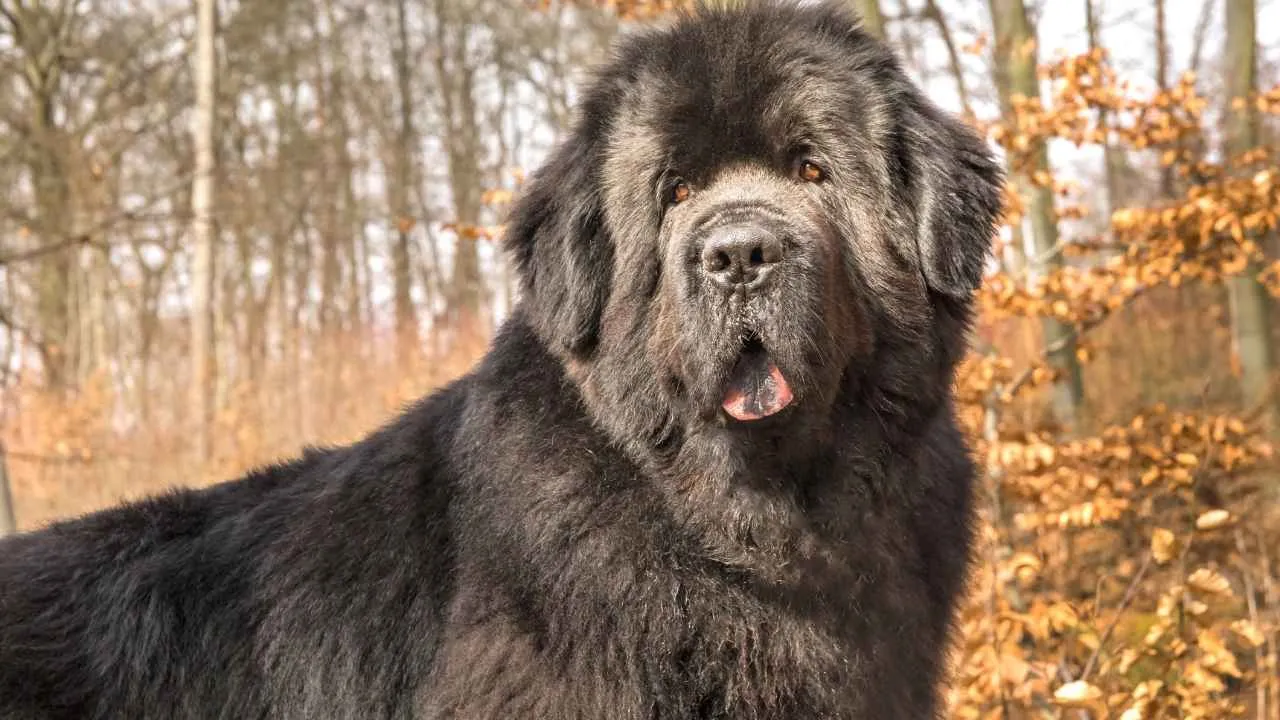
Newfoundlands are known for their calm patience, especially around children, which helped them earn their reputation as steady “nanny dogs.”
Their size gives them a grounded confidence that families often admire. Because of this heavier build, they face health concerns that can shorten their years compared to many other large working breeds.
Physical Depth Comes With Genetic Demands
Their broad frame and thick bone structure make them powerful companions capable of steady, controlled movement. Responsible breeders screen for hip and elbow issues, along with heart disease and cystinuria, all of which play a role in the breed’s shorter lifespan.
This is made simpler by the following points:
Large bone density places extra strain on joints
Heart screening is routine in well-bred lines
Cystinuria monitoring reduces urinary complications
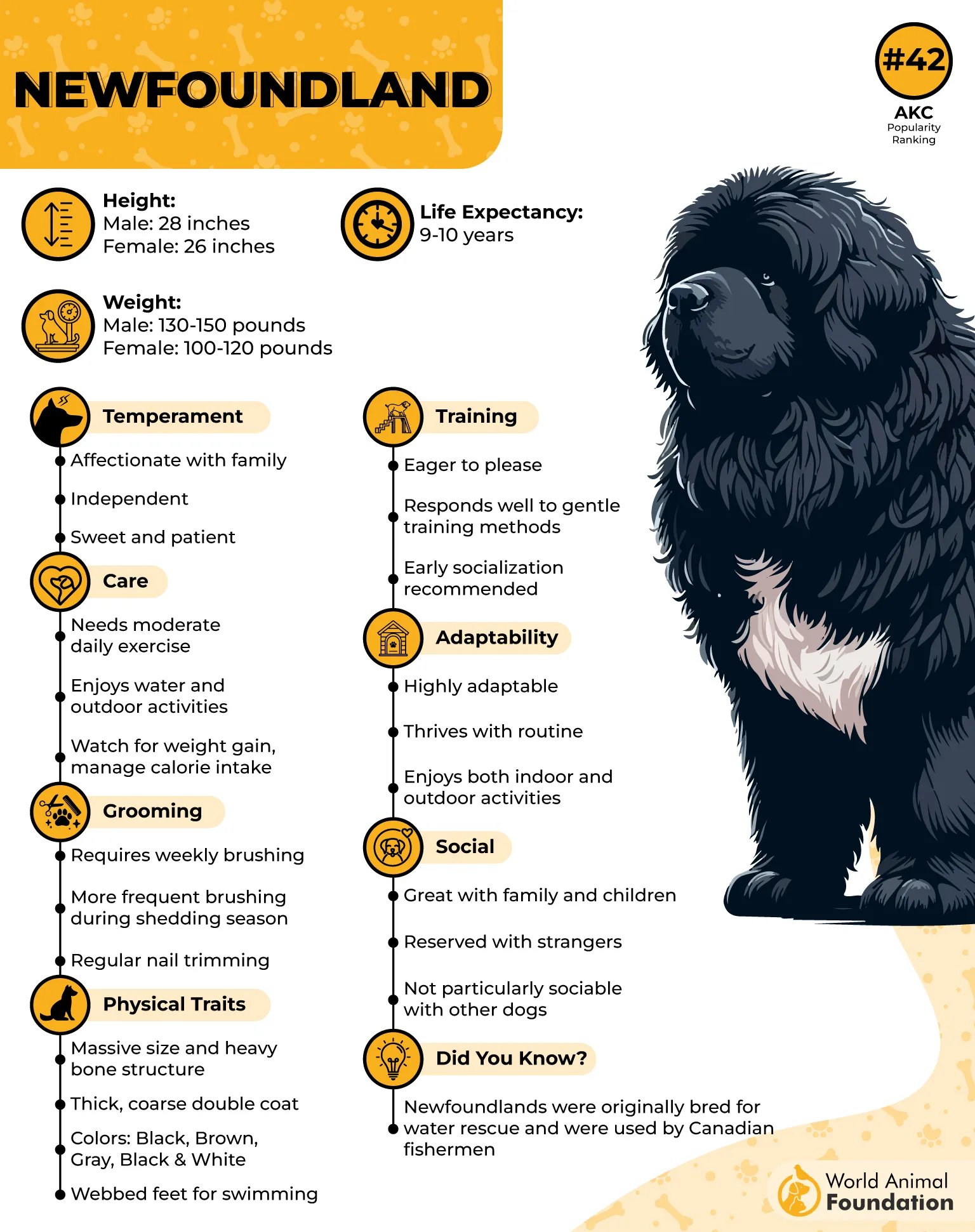
A Dog That Bonds Quietly
Newfoundlands form gentle connections with their families and show an easy tolerance for bustling household activity. They are not demanding in their communication, preferring calm presence over constant stimulation. This mellow nature often leads families to forget how important regular health checks are for a breed prone to early aging.
Conclusion
Reaching this point brings a clearer understanding of how a dog’s life can feel brief, even when the bond grows deep. The breeds with the shortest years often carry bodies that age faster, especially among large dogs that mature early and tire sooner than smaller dogs.
Their strength does not change the pace of their time, but it reminds us how precious each moment becomes. Gentle care and steady exercise help support their comfort, even if the years remain limited. Learning what shapes their lifespans allows families to move forward with awareness, love, and a deeper appreciation for the time they share.


